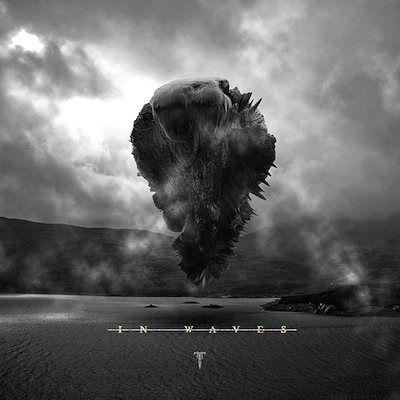 This story sails under false colours.
This story sails under false colours.
During the golden age of piracy it was common for pirates to deceive merchant vessels by flying the flag of a friendly country, such as the Union Flag or the Cross of Burgundy. Only when escape was impossible would they run up the Jolly Roger. This book used a similar trick on me. It starts out as a funny story where a caddish young politician, drowning in bad publicity, flees the country on a boat bound for the far East. Soon (while he’s at sea, incidentally) The Torture Garden completely changes in tone and style.
Octave Mirbeau was a 19th century French journalist, novelist, and full-time burr in the establishment’s saddle. This is one of his most remembered works: a very excessive satire story that seems to be the bang-from-behind offspring of Jonathan Swift and the Marquis de Sade. The hero (nameless, as best I can recall) meets shipboard a depraved young woman called Clara, who has all sorts of issues to discuss with her inner child. She seems demur and immune to flattery, but comes to life at the slightest hint of cruelty, violence, or pain.
The book is very funny. The characters are picaresque and exaggerated like the ones in George MacDonald Fraser’s Flashman books. I laughed at several parts, such as this exchange, where a sailor is attempting to impress Clara.
“Well then?” she said maliciously, “so it’s not a joke? You’ve eaten human flesh?”
“Certainly I have!” he answered proudly with a tone that established his indisputable superiority over the rest of us.
Clara and her male companion journey to China’s famous “Torture Garden”, a place where criminals go to die. The Asians are sophisticated and evolved in this matter. Where Europe allows its prisoners to languish in dark dungeons, China’s prisoners live and die in massive gardens well equipped for all forms of torture. Viburnums enriched by bilirubin. Azaleas watered by arterial gore.
Mirbeau writes satire really well. One of the funniest parts has a seasoned Chinese torture ranting about Westerners invading the land and bringing their crude and barbaric methods of torture with them, with no respect for Chinese tradition.
Our protagonist’s goes on a tour through this garden, learning about plants and pain. The garden is really quite extraordinary. There is a method of torture involving a rat and a basket and a heated brand that they could never have thought of at Gitmo Bay.
Our protagonist is appalled by everything he sees. Clara laughs and mocks him. These exchanges turn the old trope John Wayne telling the woman to close her eyes as she walks past the dead Injuns on its ear…although it’s hard to feel sorry for our hero. He has the option to turn back at any point, yet he continues exploring the garden. Then, in the book’s final passages, even Clara’s walls and rationalisations break down, and the result is one of the most frank and disturbing scenes of emotional implosion I’ve encountered in a book.
Although it always keeps satire close to its heart, I must emphasise that there are very few books as gruesome as The Torture Garden. The 120 Days of Sodom and Story of the Eye make their nature clear at the outset. The Torture Garden tricks you. I wonder how many idle French intellectuals sat down for a comfortable tale of misbehaving rakes and armchair rebellion, and were exposed to…this.
No Comments »
 Trivium is part of the late noughties trend I call “hardcore band goes thrash.”
Trivium is part of the late noughties trend I call “hardcore band goes thrash.”
It’s where a hardcore or scenester or emo or whatever band starts growing their hair long, ripping off Metallica a little in their riff construction, and acting like they’re old-school metal. Tim Lambesis. Bullet for my Valentine. Even Disturbed. Everyone’s done it. It’s like the reverse of selling out. I love old fashioned metal. I hate bandwagon hopping pieces of shit pretending they’re old fashioned metal.
There’s a corollary: trendy modern bands with harmonised guitar leads saying they’re inspired by Iron Maiden. Fact: any modern hardcore band that uses harmonised leads was inspired by In Flames (or some other In Flames sounding band like Arch Enemy). Don’t argue. It’s the truth. Oh, sure…they have all the Iron Maiden albums now, because you have to live the lie…but they were fans of In Flames first.
In Waves is Trivium’s fifth album. They’ve scaled back the overt Metallica/Annihilator influences of The Crusade, ditched the epic pseudo-Iron Maiden trappings of Shogun, and delivered a focused, brutal punch of their not-so-powerful brand of metal. In Waves is as polished as a metal album can get. The production is huge and thick and loud, to the point where Nick Augustomendezdfasdfkhj (who the fuck knows who drums for this band) threatens to blow speakers apart with each snare hit. Matt Heafy and Corey Can’t-Be-Bothered-to-Type-Out-His-Name bring their hardest and toughest guitar tones yet. (The bassist is an Unperson as always.)
Songwriting verdict: all over the place. Trivium alternate good and crap, over and over and over and over. The surging djent riff powering the title track…this is good. The annoying melodic verses and repetitive chorus…this is bad. The powerful rhythmic stomp of “Dusk Dismantled”…this is good. The obnoxious “bree” inhales on the final chorus…look, deathcore is over, you dumbasses. You should be over, too.
Most of the songs feature choppy unmemorable “core” riffs and horrible clean choruses. The entire lead section is greatly simplified compared to their last album. It seems they had trouble replicating Shogun’s three-guitar parts live, so they ditched them for a “only write enough solos to keep up the charade of being old school” approach. Shogun was inconsistent too, but at least it tonally sounded unique and interesting. Now Trivium sounds exactly like everyone else.
I do love one song unreservedly. “Chaos Reigns” is the heaviest Trivium song to date, featuring fast as hell drumming and an amazing set of riffs. Trivium slays on this song. “Chaos Reigns” is actually frustrating, because it shows what the band is capable of. I know the tiger’s there. But they haven’t tamed it yet, and they probably never will. Everyone’s always wondered when Trivium will fully deliver on their potential. Five albums in and you have to wonder how long the wait will be.
It annoys me when bands write an album with just one killer song. In a sense, it’s worse than an album with nothing but duds. Why? Because it’s a tease. I’d rather listen to an untalented band that can’t play music than a talented band that refuses to play music.
No Comments »
 This review is a useless waste of time. I can tell you very little about Gweel. It’s a book, if that helps. It’s made of paper. It has pages. Lots of little words on the pages.
This review is a useless waste of time. I can tell you very little about Gweel. It’s a book, if that helps. It’s made of paper. It has pages. Lots of little words on the pages.
What I can’t do is classify Gweel into a genre, not because none of them fit, but because the concept of a genre doesn’t seem to apply to Gweel. It stands alone, without classification. Calling Gweel “experimental” or “avant garde” would be like stamping a barcode on a moon rock.
It may have been written for an audience of one: author Simon Whitechapel. If we make the very reasonable assumption that he owns a copy of his own book, he may have attained 100% market saturation. However, there could be a valuable peripheral market: people who want to read a book that is very different from anything they’ve read before.
It is a collection of short pieces of writing, similar in tone but not in form, exploring “dread, death, and doom.” “Kopfwurmkundalini” and “Beating the Meat” resemble horror stories, and manage to be frightening yet strangely fantastic. The first one is about a man – paralysed in a motorbike accident, able to communicate only by eye-blinks – and his induction into a strange new reality. It contains a rather thrilling story-within-a-story called “MS Found in a Steel Bottle”, about two men journeying to the bottom of the ocean in a bathysphere. “Kopfwurmkundalini”‘s final pages are written in a made-up language, but the author has encluded a glossary so that you can finish the story.
Those two/three stories make up about half of Gweel’s length. The remainder mostly consists of shorter work that seems to be more about creating an atmosphere or evoking an emotion. “Night Shift” is about a prison for planets (Venus, we learn, is serving a 103.2 year sentence for sex-trafficking), and a theme of prisons and planets runs through a fair few of the other stories here, although usually in a less surreal context. “Acariasis” is a vignette about a convict who sees a dust mite crawling on his cell wall, and imagines it’s a grain of sand from Mars. The image is vivid and the piece has a powerful effect. “Primessence” is The Shawshank Redemption on peyote (and math). A prisoner believes that because his cell is a prime number, he will soon be snatched from it by some mathematical daemon (the story ends with the prisoner’s fate unknown). “The Whisper” is a ghost story of sorts, short and achingly sad.
No doubt my impression of Gweel differs from the one the author intended. But maybe his intention was that I have that different impression than him. Maybe Gweel reveals different secrets to each reader.
I can’t analyse it much, but Gweel struck me as an experience like Fellini’s Amarcord…lots of little story-threads, none of them terribly meaningful on their own. Experienced together, however, those threads will weave themselves into a tapestry in the hall of your mind, a tapestry that’s entirely unique…and your own.
No Comments »
 This story sails under false colours.
This story sails under false colours. 

